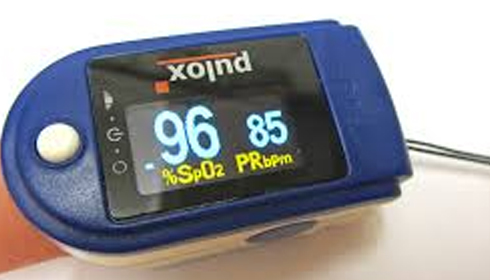
Bias in Pulse Oximeters: A Persistent Challenge Despite FDA Guidance
A recent study led by researchers at Johns Hopkins Bloomberg School of Public Health has shed light on the limited progress manufacturers have made in addressing racial bias in pulse oximeters. Despite the Food and Drug Administration’s (FDA) 2013 guidance urging manufacturers to include participants with diverse skin tones in their device testing, compliance remains inconsistent. This raises critical concerns about the accuracy of these widely-used devices, particularly for non-white populations.
Pulse oximeters, essential tools in both clinical and home settings, estimate blood oxygen levels by shining light through the skin. However, since the 1990s, clinicians have reported that these devices often give inaccurate readings for individuals with darker skin. Such inaccuracies can result in undetected hypoxemia, placing non-white patients at risk of missed symptoms and delayed treatment—a stark reminder of the intersection between technology and health inequities.
The FDA’s guidance in 2013 aimed to mitigate this issue by recommending that manufacturers ensure at least 15% of their study participants, or at least two individuals, have darker skin tones. Yet, according to the new study, adherence to this recommendation has been minimal. Analysis of publicly available FDA clearance summaries from 1996 to 2024 reveals a concerning trend: only 25% of the clearance summaries since 2016 indicate compliance, a modest increase from 4.1% prior to the guidance.
The findings underscore a critical flaw in relying on voluntary guidance to address technological bias. Dr. Kadija Ferryman, lead author of the study, highlights the urgency of more robust interventions:
“Our findings underscore the limits of voluntary guidance alone for solving bias in pulse oximeters. The FDA’s new draft guidance is a step in the right direction, but others, including manufacturers, health care organizations, and other organizations committed to patient safety, can contribute to addressing this bias.”
This issue extends beyond pulse oximeters, touching on the broader challenge of ensuring equity in medical device performance across diverse populations. As Dr. Ferryman and her colleagues describe in a companion Viewpoint in JAMA, bias in pulse oximetry is a “wicked problem”—one that defies simple solutions due to its complexity and the myriad stakeholders involved.
The widespread use of pulse oximeters during the COVID-19 pandemic has further amplified the urgency of addressing this bias. Many patients relied on these devices at home to monitor their oxygen levels, unaware that the readings might be less reliable for individuals with darker skin. Inaccurate readings could have serious consequences, potentially leading to delayed hospitalization or mismanagement of critical symptoms.
The study also highlights a lack of standardization in how manufacturers report on skin tone variation in their testing. Descriptions in clearance summaries often use vague terms like “dark” or “light” or refer only to racial or ethnic categories, rather than providing detailed assessments of skin pigmentation. This inconsistency complicates efforts to evaluate whether devices are truly equitable in their performance.
In response to ongoing concerns, the FDA issued updated draft guidance on January 6, 2025, recommending that manufacturers test pulse oximeters on larger and more diverse participant pools. However, given the limited impact of the 2013 guidance, it remains to be seen whether this new recommendation will lead to substantial improvements.
The study’s findings also raise important questions about regulatory frameworks and industry accountability. While the FDA’s clearance process ensures that new devices are comparable to previously approved ones, it does not necessarily guarantee that innovations address known biases. Without mandatory requirements or incentives for manufacturers to test devices across a full spectrum of skin tones, disparities in device accuracy are likely to persist.
Addressing this issue will require coordinated efforts from multiple stakeholders. Health care organizations must be proactive in demanding equitable devices, while manufacturers should prioritize transparency in their testing methods. Policymakers, too, have a role to play in ensuring that regulatory standards are robust and enforceable.
As Dr. Ferryman emphasizes, solving the bias in pulse oximeters is a shared responsibility: “The FDA’s new draft guidance is a step forward, but solving this problem will require more than just regulatory changes—it demands a concerted effort from all those involved in patient care.”
Ultimately, this study serves as a stark reminder of the persistent inequities in medical technology. It underscores the need for vigilance, accountability, and innovation to ensure that life-saving devices work equally well for all patients, regardless of their skin color. The stakes are high: without meaningful change, racial disparities in health outcomes will continue to be exacerbated by the very technologies designed to improve care.